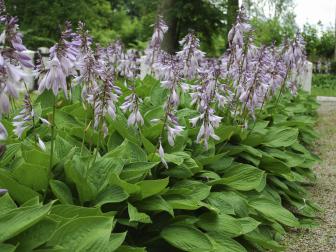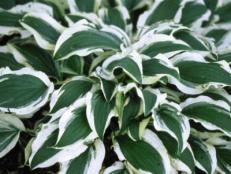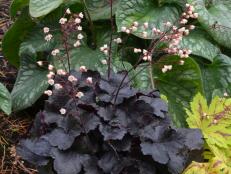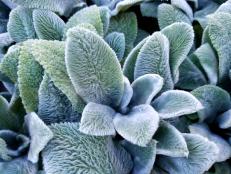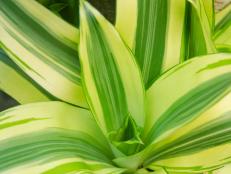Transplanting Hostas
Learn how and when to transplant hostas in your garden.
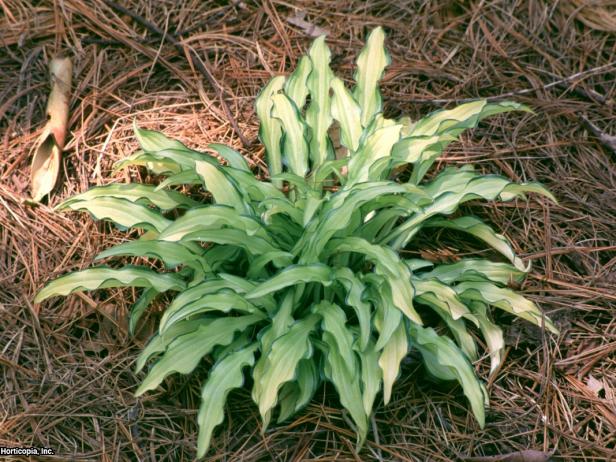
The ideal times to transplant hostas such as 'Kabitan' is spring or early autumn.
Dig into shade gardening even just a little and you’ll be transplanting hostas before you know it. These shade-loving perennials have easy growing personalities and when they’re happy, they eventually outgrow the space you’ve given them. The good news is that you don’t need heavy duty garden knowledge to learn how to transplant hostas. The trickiest part is knowing when to transplant hostas — and that’s not even that difficult.
When to Transplant Hostas
Wondering when to transplant hostas? The ideal times are in spring or early autumn. In most regions, if you can time it right, plan to transplant hostas before seasonal rains arrive. That way, the rains can keep soil moist and help new plants get established more quickly. Early fall is probably the absolute best time to tackle transplanting hostas because soil is still warm from long summer days, which means hosta roots will grow quickly. Spring transplanting also works fine as long as you wait until soil has warmed up a bit.
Hostas: How to Plant, Grow and Care for Hostas
Learn why easy-growing hostas are one of the most popular perennials.
How often you need to transplant hostas varies. As a rule, hostas tend to grow bigger the longer they stay in one spot. So if you’re wanting a substantially sized plant, avoid frequent transplanting. If a plant has outgrown its place, then you should consider transplanting.
Some hosta varieties perform like many clump-forming perennials, with older plants dying out in the center of the clump. In this situation, new growth occurs along clump edges. This new growth is often individual small plants ideal for transplanting.
Hostas that have brown leaf margins or odd color spots on leaves are candidates for moving to a spot that provides better growing conditions.
How to Transplant Hostas
Usually transplanting hostas is easy and relatively quick. Here are the steps to transplanting hostas.
- Take time to prepare the soil in the new planting area. Mix in plenty of organic matter to create a soil base that’s rich and drains well. For organic matter, use compost, ground tree bark, composted manure or any other material that’s locally available to you.
- If you’re transplanting hostas when they’re fully leafed out, tie leaves up with string or cut them a few inches above ground level.
- Get as much of the root ball as you can. This is especially important with larger plants. Start digging the plant by inserting your shovel into soil just outside the edge of the leaves. Roots typically extend this far. Insert the shovel all the way around the hosta, forming a circle. Pry the plant out of the ground. With really large plants, roots may extend up to 18 inches deep.
- Once the plant is out of the ground, slide it onto a tarp. This protects surrounding plants or lawn from being inundated with soil falling off the hosta root system. It also makes it easier to tackle dividing plants, if that’s necessary.
- Place the new plants at the same depth they were growing previously. Water well after transplanting.
Dividing Hostas
Dividing hostas is another easy process, although with large, established clumps it can require some serious elbow grease.
When to Divide Hostas
If you’re considering splitting hostas because your plant isn’t doing well, the growing conditions probably aren’t ideal. Other perennials, like yarrow, garden mums or coneflower, send out a clue they need dividing when the center clump of the plant dies. Hostas don’t work that way. Many of the giant types actually need about five years to come into their own. Dividing hostas like these sooner simply reduces their growth potential.
19 Great Hosta Varieties for Your Garden 19 Photos
This shade-loving plant comes in a head-spinning array of hues and sizes.
Splitting hostas is best done in spring or early fall. Ideally, plan on dividing hostas before spring or fall rains arrive. Hostas suffer most when they lose roots, so as with transplanting hostas, dig as much of the rootball as possible.
How to Divide Hostas
If you just need a few divisions, dig small clumps that have formed beside the larger parent clump. If your goal is dividing large hosta plants into several viable clumps, insert a spade into soil outside the dripline of leaves. Use a sharp spade, cutting into soil in a circle surrounding the entire plant.
Pry the plant out of the ground. With mature hostas, you may have to dig 18 inches down to get the roots. Unearth clumps onto a tarp. Pull apart clumps with your hands, or use a knife to slice crowns or growing points away from the mother plant. An easy method for dividing hostas is cutting a clump into thirds or fourths and replanting those pieces. Using this method, in one growing season plants fill in so much that it’s tough to tell they were divisions.








